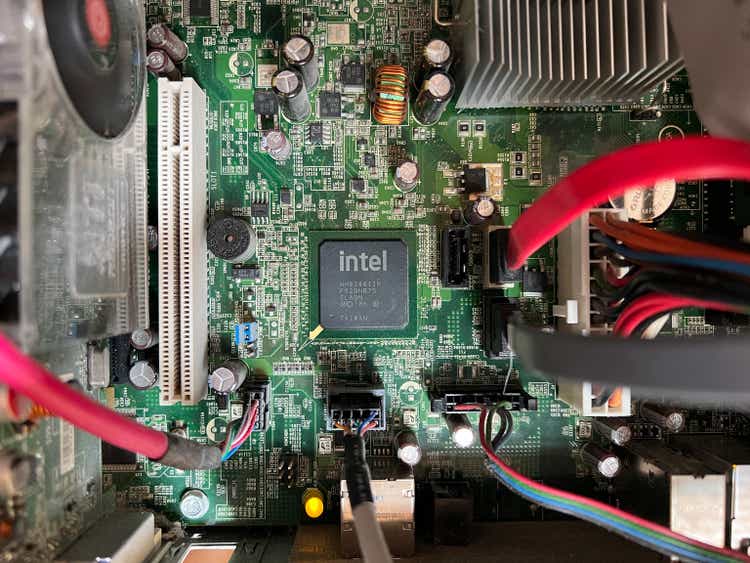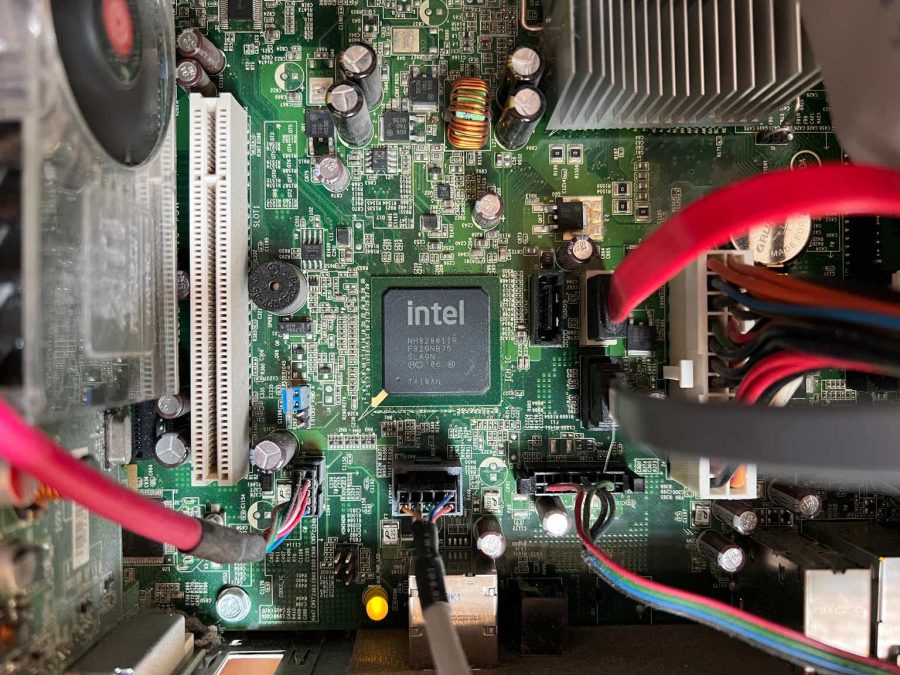Summary:
- Inspired by the competitive threat from Arm-based chips such as Apple’s M-series SOCs and Qualcomm’s Snapdragon X-series, Intel has made a number of changes to its chip architecture for its new Core Ultra Series 2 chips (codenamed “Lunar Lake”).
- The new Intel chips beat the others on many battery-life and performance-per-watt tests.
- One of the key challenges that Intel is facing is how to take some of the radically different ideas it integrated into Lunar Lake and incorporate them into future SOC designs.
FinkAvenue
Competition is indeed a beautiful thing, especially in the tech world. There’s just something about the threat of being dethroned from the top of the performance hill that seems to trigger the kind of higher-risk changes that are often needed to see significant improvements from one generation of a chip or device to another.
That certainly seems to be the case with Intel’s (NASDAQ:INTC) new Core Ultra Series 2 chips (codenamed “Lunar Lake”). Inspired by the competitive threat from Arm-based chips such as Apple’s (AAPL) M-series SOCs and Qualcomm’s (QCOM) Snapdragon X-series, Intel made a number of dramatic changes to its chip architecture for Ultra Series 2 (see “Computex Chronicles Part 5: Intel Strikes Back” for more.) Amongst the alterations: integrating system memory into the chip, dropping support for hyperthreading, reducing the total number of CPU cores, and more. When many of these changes were first revealed, they seemed confusing, if not downright odd, especially in comparison to the kinds of architectural changes Intel has made for many, many years.
Yet, as Intel formally announced the release of its Core Ultra 200V SOCs in Berlin prior to the IFA trade show, the new performance numbers speak for themselves. According to Intel’s benchmarks, the company has not only caught up with both Macs and Snapdragon-based notebooks on CPU and NPU benchmarks, it has also surpassed them in many cases. Even more impressively, the new Intel chips beat the others on many battery life and performance-per-watt tests. Given how much attention and praise has been lavished on the Arm-based offerings regarding their battery life, this latter point is particularly noteworthy. Many had (mistakenly) written off x86-based PCs as being incapable of matching the Arm-based offerings on power-related issues, but these new performance-per-watt-focused tests clearly demonstrate that the instruction set architecture (ISA) is not the defining factor for system power consumption.
Of course, final independent tests will be needed to verify the claims Intel made, but the company presented what certainly seemed to be a thorough (and fair) story about its own benchmarking process. Clearly, Intel recognizes that it indeed has a competitive product on many levels and is trying to go out of its way to ensure there aren’t any unpleasant surprises when it comes to reviews. Toss in the essentially guaranteed app compatibility of having an x86-based CPU, and the story gets better.
From a bigger-picture perspective, the competitive nature of the Core Ultra Series 2 chips brings yet another level of interest and excitement to the PC market. Alongside AMD’s recently released Ryzen AI 300 series chips and Qualcomm’s Snapdragon X series parts, we’re truly seeing a renaissance of the PC market – even without a great deal of AI-capable software being available yet (see “The Rapidly Evolving World of AI PCs” for more).
Speaking of which, the Core Ultra Series 2 is also the first of Intel’s SOCs to meet Microsoft’s (MSFT) Copilot+ PC specs, but the initial devices featuring the chip will be labelled as “Copilot+ Ready.” The reason for this is that the software from Microsoft needed to run the AI-based software that’s considered part of the Copilot+ experience – including the widely discussed Recall feature – won’t be ready until November.
In spite of (or perhaps because of) this, Intel also made a point to emphasize the number of third-party applications with AI-based features that can be accelerated across NPUs, the CPU, and the upgraded Xe2-based GPU found in Core Ultra Series 2. While much of the attention around AI-enhanced PCs has been focused on NPUs and Microsoft’s Copilot+ applications, the truth is that most application developers are using a combination of the CPU, GPU and NPU to run AI. Intel presented a strong argument regarding the importance of a more balanced approach to the use of various xPU components, and I remain convinced that, over the long run, this more balanced method is going to be what wins out.
Interestingly, conversations with ISVs attending the event (admittedly, guests of Intel) confirmed that their development methods are following the approach of leveraging multiple elements of the SOC and not just the NPU. In addition, they described the challenge of having to write software that works across the different NPU architectures that Intel, AMD, and Qualcomm are using and the how the level of support they’re getting from each of them currently varies a great deal. The bottom line is that these efforts are non-trivial and highlight that we are still very early in the AI PC revolution when it comes to applications that leverage the new hardware.
Looking ahead, one of the key challenges that Intel is facing – particularly in light of the issues the company is enduring – is how to take some of the radically different ideas it integrated into Lunar Lake (nee “Core Ultra Series 2”) and incorporate them into future SOC designs. Given the multi-year process that chip architecture design is, this may prove to be a challenging task, particularly given how different the changes are versus typical Intel designs and how hard it is to make these kinds of big alterations late in the design process. If Intel can pull this off – and keep building on the large base of work for AI-focused applications and low-level framework efforts that are already created for ISV partners – the company can build on the client momentum that Core Ultra Series 2 will likely provide. Of course, Intel is facing bigger and more existential challenges as well, but getting the client business back on track would be a big step in the right direction.
Disclaimer: Some of the author’s clients are vendors in the tech industry.
Disclosure: None.
Original Source: Author
Editor’s Note: The summary bullets for this article were chosen by Seeking Alpha editors.
